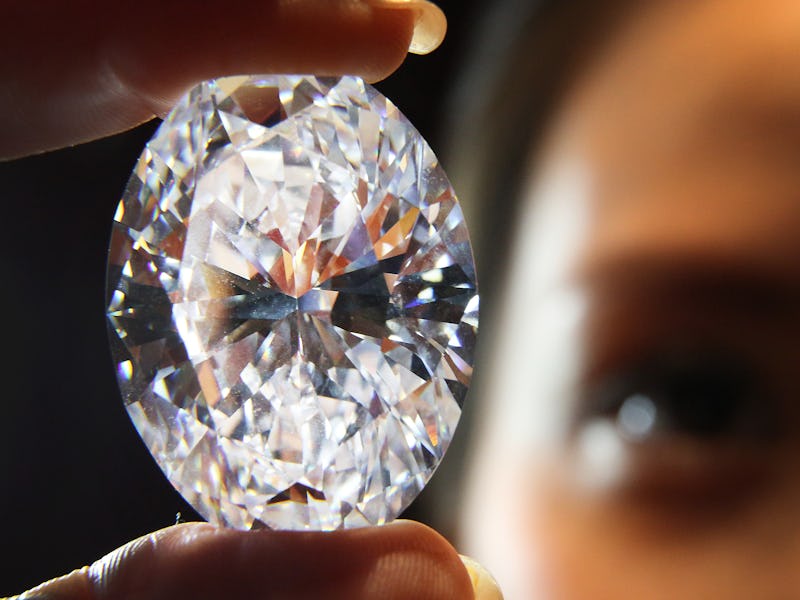Nanodiamonds Might Improve Your Chances After a Root Canal
Root canals are about to get a whole lot fancier.

Pretty much everybody agrees — root canals are the worst. Even if you haven’t gone through one, the idea of dealing with lightning-sharp tooth pain and a whole dental procedure sounds terrible. But imagine you’d gone through all that only to get another infection or lose that tooth afterwards?
New findings out of the UCLA School of Dentistry show that the complications that might happen after a root canal are significantly decreased thanks to… diamonds? Yep, those ultra-strong, sparkly little stones are great for earrings, rings, and the inside of your teeth.
Researchers at UCLA took nanodiamonds — which are basically the leftover dust of diamond refining and mining — and combined them with current root canal therapy technology to create a solution that can mitigate the chances for serious infections after the procedure.
First things first: what’s root canal therapy and why would you need it?
When a tooth’s pulp — that’s the area inside a tooth where there are nerves and blood vessels — gets infected, it causes horrendous pain and potential health consequences. Dentists then go inside the tooth, scrape out all the infected areas, and refill it with a polymer called “gutta percha” that acts as a sealant against future infections. (The gutta percha basically looks like a long sliver that fills up the empty tooth canal.) However, using traditional gutta percha isn’t a surefire bet, since the material isn’t totally solid and doesn’t prevent infection. Additionally, there may also be tooth canals that the dentist missed in the initial procedure or the tooth may be cracked (both of which could lead to further, worse infections).
Here’s where the itsy-bitsy diamonds come in. The team at UCLA took the diamond dust and combined it with the traditional gutta percha mixture to create a stronger material to fill the canals. There were two different experiments done on human teeth: One set of teeth were tested with nanodiamond-reinforced gutta percha and another set were tested with nanodiamond-reinforced gutta percha that also had antibiotics mixed in.
The first batch of regular nanodiamond-reinforced gutta percha had the same results as the traditional (non-diamond strengthened) gutta percha, showing that the use of nanodiamonds in this branch of dentistry can work. However, the same complications with infections could still happen with this stronger batch of gutta percha.
The second batch of nanodiamond gutta percha — this time loaded with the antibiotic amoxicillin — actually showed the ability to ward off bacteria. That means the nanodiamond gutta percha with antibiotics were much stronger than traditional methods, with fewer chances for infections or complications after a root canal.
Who would’ve thought dentistry could be so chic?